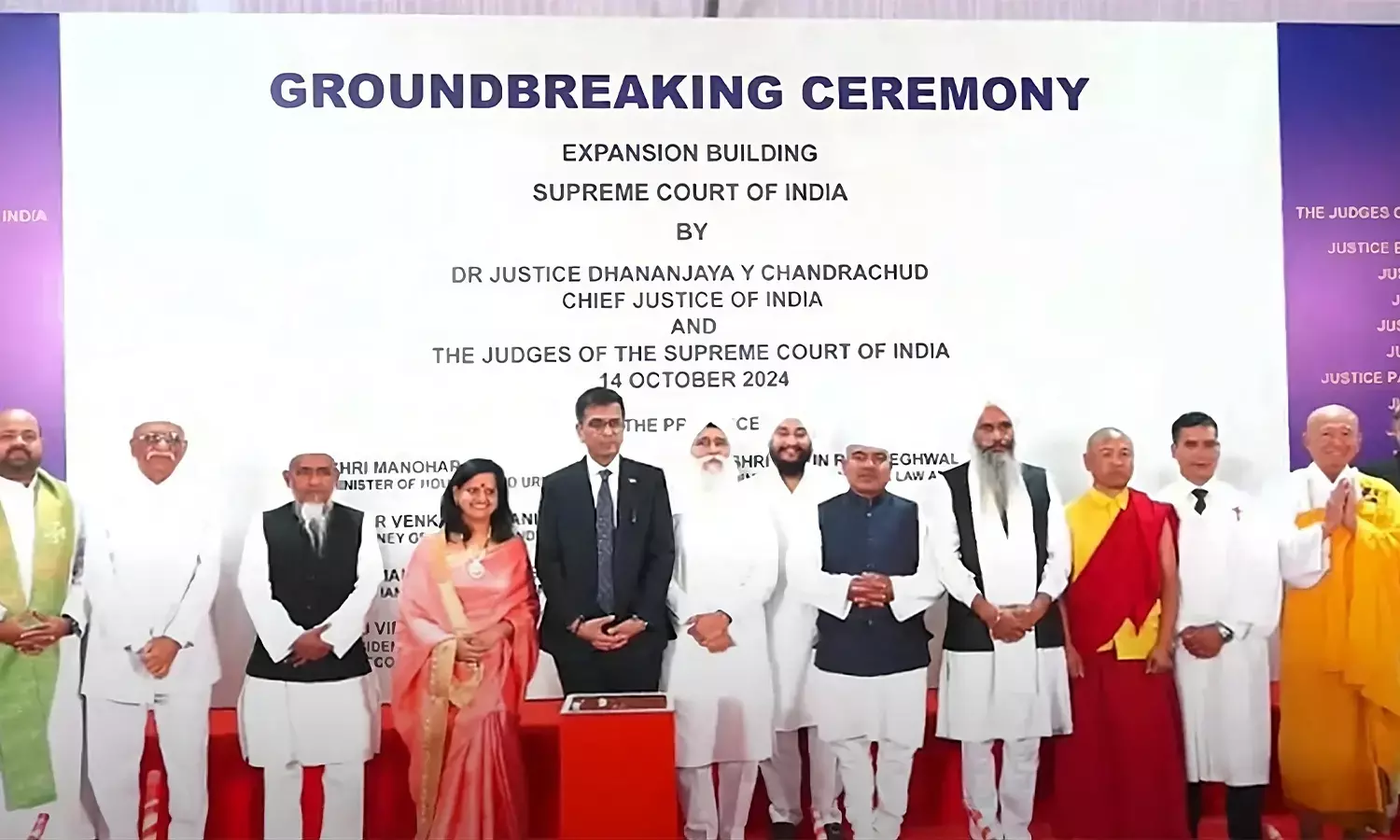“Bhoomi-Poojan” Or “Ground-Breaking” - The Debate Over Nomenclature
Some would say - “What's in a name?” As Shakespeare wrote in Romeo and Juliet, where a lover addresses her beloved - “that which we call a rose, by any other name would smell as sweet;” which is oft-quoted to state that names of things are mere conventions and do not affect what they really are. Although the same may be true for the play and in its setting, this is not true for a nation and its culture as diverse as India and the Indian Society.
In India, the choice of language and words is not merely about semantics; it reflects deeper cultural, spiritual, and social meanings or what we can call ‘connotations’. This distinction becomes especially important while considering the choice of wording used for naming events and public occasions. The nomenclature adopted for these events more often than not encapsulates interwoven cultural narratives, spiritual traditions, and societal values. However, in recent times, surprisingly, the consciousness regarding coining of names for these ceremonies seems to have been forgotten. A case at hand is the recent kickstarting and foundation laying of the project for the expansion of the Supreme Court complex. The event was dubbed officially to be a "Groundbreaking Ceremony". The choice of words, if not sinister, was strange.
In India, culturally, words like 'groundbreaking' have not been put to use to refer to the commencement of an infrastructure project of this nature or for any developmental work. Ideally, we have been using words like ‘bhoomi-poojan’ or ‘foundation ceremony’. The preference for "bhoomi-poojan" over "groundbreaking" is not merely about substituting a term but represents a deeper alignment with the country's cultural identity and our worldview. While "groundbreaking" is commonly used to denote the beginning of a construction project, it fails to encapsulate the rich symbolism, traditions, and ethics tied to the ‘land (Earth)’ in India.
The term "bhoomi-poojan" brings forth not only the cultural reverence towards Mother Earth but also frames development within an ethical and spiritual context, offering a broader set of arguments for its usage. The act of performing bhoomi-poojan is a ritualistic acknowledgement of Mother Earth, also known as Bhoo-devi in our philosophy.
In India, the earth is not seen merely as an inert mass of soil to be exploited but as a living entity deserving of reverence and respect. This principle is epitomised and can be witnessed in our day to day life, where young children in our families are taught to begin their day with chanting the shloka and greeting the Earth: "समुद्रवसने देवि पर्वतस्तनमण्डले । विष्णुपत्नि नमस्तुभ्यं पादस्पर्शं क्षमस्वमे ॥ meaning thereby: O Mother Earth, you who have the Ocean as your garments, and mountains as your bosom, salutations to you; please forgive my placing of feet on thee.
India is also a country where we proudly proclaim: माता भूमिः पुत्रो अहं पृथिव्याः, meaning thereby - Earth is our mother and we are her children! Thus, Bhoomi-poojan signifies a moral and spiritual contract with the land, wherein human activity is permitted only after honouring the earth and seeking her blessings. It serves as a reminder that while development may be essential, it should not come without recognizing the value and sanctity of nature.
By using "bhoomi-poojan" instead of "groundbreaking," there is a conscious effort to drive the point that development ought to be a balanced and thoughtful process, and not merely a utilitarian endeavour. This approach establishes a moral guideline for responsible development, encouraging mindfulness about the environmental impact of construction.
The use of "groundbreaking" in comparison appears mechanistic and devoid of cultural meaning. It focuses solely on the physical act of disturbing the soil, an activity that is neutral in tone and implies a functional relationship with the land rather than a sacred one. The terminology reflects a broader Western worldview where land is often seen as a resource for exploitation, rather than a living entity that sustains life. In contrast, "bhoomi-poojan" carries connotations of ecological harmony and ethical obligations, framing development within a context that respects the limits and needs of nature. It emphasises a worldview where development is not antagonistic to nature but is instead harmonised with it. Using this term elevates the act of starting a project from a mere procedural step to an event that considers ethical and spiritual dimensions.
There is also a critical aspect of cultural preservation at play. With globalisation, the world has been facing the risk of cultural homogenization, where local practices and traditions are often overshadowed by Western norms. Language is a significant vehicle for cultural transmission, and using terms like "bhoomi-poojan" helps to preserve and promote indigenous practices. Not only this, the importance of keeping cultural traditions alive is not just sentimental; it has practical implications. Rituals such as bhoomi-poojan often include steps that promote environmental mindfulness, such as offering plant-based items to the land, chanting mantras that express gratitude, and fostering community participation. These elements add layers of social and ecological value to the act, embedding sustainable practices into the very foundation of a project. Adopting "bhoomi-poojan" ensures that such cultural practices are not only retained but become central to modern development frameworks.
Furthermore, using "bhoomi-poojan" aligns with a broader philosophical movement towards decolonization. For countries that have bore the brunt of colonial rule, like India, the language used in official, commercial, and social settings often carries remnants of colonial influence. English terms, despite their ubiquity, and when mindlessly aped, perpetuate a colonial mindset that places Western practices above local traditions.
By choosing "bhoomi-poojan," there is an assertion of cultural autonomy, asserting that local traditions and languages have equal if not greater value in shaping modern practices. This is especially relevant in the context of India’s diverse cultural landscape, where traditional terms can resonate more deeply across different regions and communities, thereby fostering a more inclusive cultural narrative.
Beyond cultural and spiritual significance, there is a legal and ethical argument for using "bhoomi-poojan." India has numerous environmental laws and policies that emphasize sustainable development, and rituals like bhoomi-poojan naturally integrate principles of sustainability.
By formally recognizing "bhoomi-poojan" in legal and institutional practices, there is an opportunity to mainstream ethical considerations in project planning and execution. The ceremony serves as a symbolic commitment to environmental stewardship, adding an additional layer of accountability to developers and planners. It can even be institutionalised as a prerequisite for obtaining certain environmental clearances, thereby embedding traditional wisdom into modern regulatory frameworks. This approach not only honours cultural practices but also leverages them as tools for reinforcing sustainable development policies.
The adoption of "bhoomi-poojan" also serves a social function by fostering community involvement and shared responsibility. Rituals bring people together, instilling a sense of collective ownership and accountability. When a bhoomi-poojan is performed, it often involves local communities, spiritual leaders, and stakeholders, making the ceremony a public acknowledgment of the land’s significance. This inclusive process encourages dialogue and awareness about the impact of development projects on the local ecosystem and communities.
In contrast, the term "groundbreaking" often denotes a more corporate or bureaucratic event, which might exclude community participation and lack the emotional engagement found in traditional rituals. By choosing "bhoomi-poojan," there is a shift towards a development model that is participatory, culturally meaningful, and socially responsible.
Additionally, framing the start of construction as "bhoomi-poojan" introduces a moral dimension to the economics of development. It challenges the purely transactional approach to land as a commodity by emphasising that land development comes with ethical duties. The ritual acknowledges that human progress should be balanced with the rights of nature and the well-being of future generations. It situates development within a broader narrative of stewardship, implying that the land must be respected and preserved even as it is utilised. The use of such terminology can help in shaping public policies and corporate practices that prioritise long-term sustainability over short-term gains.
In conclusion, preferring "bhoomi-poojan" over "groundbreaking" is not just a matter of cultural pride but also one of ethical and environmental necessity. It connects modern development practices with India’s traditional values, integrating a sense of spirituality, sustainability, and social responsibility. It serves as a reminder that development should not merely be about altering landscapes but about doing so in a way that respects the natural, cultural, and spiritual dimensions of the land. Embracing "bhoomi-poojan" allows for a more holistic approach to progress, one that honours the past while guiding the present towards a more sustainable and culturally enriched future.
This choice of language represents a conscious effort to align development with values that are timeless, relevant, and uniquely rooted in India's cultural and ethical landscape. It is hoped that better sense prevails and words like “bhoomi-poojan” regain its place in the lexicon and terminology of public projects as well as the public discourse.
[The opinions expressed in this article are those of the author. Verdictum does not assume any responsibility or liability for the contents of the article.]












